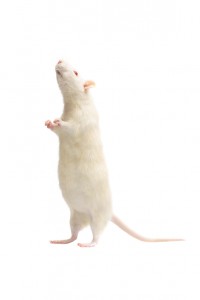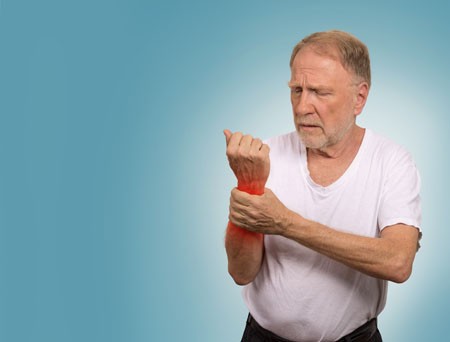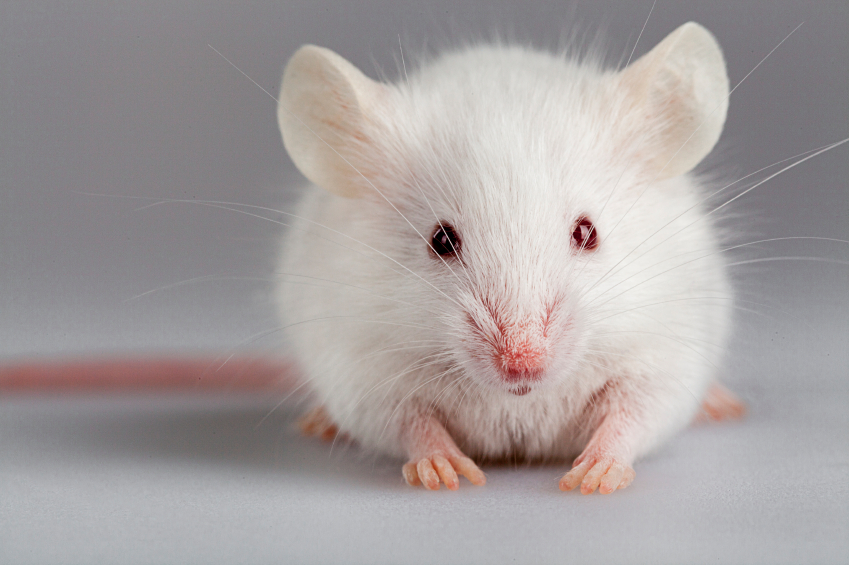Pilot Study of Pramipexole for Anhedonia Symptoms in Unipolar Depression

At a recent scientific meeting, researcher Laura Hack described an open-label pilot study of pramipexole in participants with major depression including anhedonia, or inability to feel pleasure. Five participants with prominent anhedonia and major depression completed eight weeks of treatment with pramipexole, which activates dopamine D2 and D3 receptors. Four of the five who completed the study saw notable improvements in their anhedonia and quality of life.
The starting daily dose was 0.26 mg, which was increased every three days to a target dose of 2.0 mg per day. Two additional patients dropped out due to side effects (nausea, poor sleep, and headache).
Low activity in the ventral striatum, a part of the brain associated with decision-making and implicated in the brain’s reward system, correlated with the severity of the patients’ anhedonia. These results suggest that further studies are warranted.
Pramipexole has also shown positive effects in two small studies in bipolar depression. The drug is currently approved by the US Food and Drug Administration for the treatment of Parkinson’s disease and also works in restless legs syndrome.
Il-6 Inhibitor Sirukumab May Improve Anhedonia, But Not General Depression
 At a 2018 scientific meeting, researcher Giacomo Salvadore and colleagues reported that the drug sirukumab, a monoclonal antibody that targets the inflammatory marker Il-6 and that was originally developed to treat rheumatoid arthritis, did not have a statistically significant effect on overall depression compared to placebo. However, by the twelfth week of treatment, sirukumab did have a significant effect on anhedonia (loss of interest or pleasure in activities that one previously enjoyed).
At a 2018 scientific meeting, researcher Giacomo Salvadore and colleagues reported that the drug sirukumab, a monoclonal antibody that targets the inflammatory marker Il-6 and that was originally developed to treat rheumatoid arthritis, did not have a statistically significant effect on overall depression compared to placebo. However, by the twelfth week of treatment, sirukumab did have a significant effect on anhedonia (loss of interest or pleasure in activities that one previously enjoyed).
The degree of improvement in anhedonia was significantly correlated with patients’ baseline levels of the inflammatory marker CRP. Since the inflammatory marker that sirukumab targets, Il-6, is one of those most often elevated in depression, it appears that more study of sirukumab would be warranted.
Antibody Sirukumab Improves Depression and Anhedonia in Patients with Rheumatoid Arthritis
Patients with rheumatoid arthritis have high levels of the inflammatory proteins known as interleukin-6 (IL-6), which have been implicated in depression and stress. Rheumatoid arthritis is sometimes characterized by depressive symptoms as well. New research by Dai Wang and colleagues presented at the 2015 meeting of the Society of Biological Psychiatry suggests that treating the high levels of IL-6 in rheumatoid arthritis with the human anti–interleukin-6 antibody sirukumab can reduce symptoms of depression and anhedonia (loss of capacity to experience pleasure).
In the study, patients with rheumatoid arthritis and symptoms of depression or anhedonia were randomized to receive either placebo or sirukumab. After 12 weeks, those who received sirukumab had significantly reduced depression.
Editor’s Note: These data are consistent with meta-analyses showing that IL-6 is elevated in depression and with a study by Scott Russo showing that in animals, interfering with IL-6 blocks the development of depression-like behaviors that typically occur after repeated defeat stress (when an animal is subjected to attacks from a larger, more dominant animal).
Antidepressants and Ketamine Reverse Animal Models of Anhedonia and Learned Helplessness
Researcher Tony Pitts presented a study at the 2014 meeting of the International College of Neuropsychopharmacology (CINP) that described the neurobiology of an animal model of depression in rodents. In animal models, researchers provoke depression-like symptoms in animals with the hopes of finding neurobiological clues to human depression. Pitts’ studies explored the effects of acute stressors as well as more chronic long-term stressors such as learned helplessness.
In the rodents, acute stressors caused increased cell firing in the hippocampus, which caused increases in burst firing and an increase in the number of cells firing in the ventral tegmental area, which then led to increased activity in the nucleus accumbens (the brain’s reward center). However, after the stressor was over, there was an opponent process that resulted in a much more prolonged period of inhibition in the nucleus accumbens, with associated decreases in psychomotor activity and reward seeking. The rodents lost their preference for sucrose and engaged in less intracranial self-stimulation, pressing a bar to stimulate the brain pleasurably. These and other effects suggest an analogy to anhedonia (loss of pleasure in activities that were previously enjoyed), which is a key component of human depression.
In related studies, after experiencing periods of inescapable shocks, rodents developed learned helplessness, failing to avoid the area where shocks were delivered even when an exit was readily available. Rodents who had learned helplessness showed inhibited firing of cells in the ventral tegmental area, less activity in the nucleus accumbens, and apparent anhedonia. This inhibition was mediated via messages from the infralimbic prefrontal cortex (the equivalent to the subgenual cingulate cortex in humans, important for motivation) to the amygdala and then the GABAergic ventral pallidum, which decreased the number of dopaminergic cells firing in the ventral tegmental area. Blocking the amygdala input to this inhibitory pathway reversed the low dopamine firing and the anhedonia-like behaviors.
The anesthetic ketamine (which has rapid-acting antidepressant effects in humans) produces an immediate reversal of the learned helpless behavior in the rodents and increases the number of dopamine cells firing in the ventral tegmental area. Ketamine administered directly into the nucleus accumbens induces long-term potentiation (enhanced synaptic responsivity) and reverses helpless behavior and the long-term depression of neural firing that is associated with it.
Thus, when an acute stressor is over and the opponent process emerges, or following long-term chronic stressors such as learned helplessness, the excitatory path to the ventral tegmental area is absent, while the inhibitory path to the ventral tegmental area (via the infralimbic prefrontal cortex, amygdala, and ventral pallidum) predominates. Ketamine is able to re-activate the activating pathway and increase activity in the ventral tegmental area and the nucleus accumbens, changes that are associated with the reversal of learned helplessness and anhedonia.
Editor’s Note: In the previous BNN, we reported researcher Scott Russo’s findings that input from the intralaminar nucleus of the thalamus was critical to the depression-like behaviors seen in a different animal model of depression, social defeat stress, where repeated exposure to defeat by a larger, more aggressive animal produces behaviors that resemble human depression. Here in Pitts’ research, learned helplessness is induced by inescapable shocks. Both models share the finding that firing decreases in the reward area of the brain (the nucleus accumbens). However, the key part of the brain driving the low levels of activity in the nucleus accumbens and the associated depression-like behavior appear to be different in these two different models. The intralaminar nucleus of the thalamus plays a key role in the social defeat stress model, while the infralimbic cortex and the amygdala play key roles in the learned helplessness model. These data together suggest that part of the reason depression differs from person to person may be because the illness can be driven by different brain areas as a result of different kinds of stressors.
Antidepressants and Ketamine Induce Resilience in Animals Susceptible to Depression-Like Behavior
 To study depression in humans, researchers look to rodents to learn more about behavior. Rodents who are repeatedly defeated by more aggressive animals often begin to exhibit behavior that resembles depression. At the 2014 meeting of the International College of Neuropsychopharmacology (CINP), researcher Andre Der-Avakian reported that in a recent study, repeated experiences of social defeat led to depressive behavior in a subgroup of animals (which he calls susceptible), but not in others (which he calls resilient). Among many biological differences, the resilient animals showed increases in neurogenesis in the dentate gyrus of the hippocampus.
To study depression in humans, researchers look to rodents to learn more about behavior. Rodents who are repeatedly defeated by more aggressive animals often begin to exhibit behavior that resembles depression. At the 2014 meeting of the International College of Neuropsychopharmacology (CINP), researcher Andre Der-Avakian reported that in a recent study, repeated experiences of social defeat led to depressive behavior in a subgroup of animals (which he calls susceptible), but not in others (which he calls resilient). Among many biological differences, the resilient animals showed increases in neurogenesis in the dentate gyrus of the hippocampus.
Chronic treatment of the susceptible animals with the selective serotonin reuptake inhibitor (SSRI) antidepressant fluoxetine or the tricyclic antidepressant desipramine, which both increase neurogenesis, also reversed the depressive behavior in about half of the animals. A single injection of the anesthetic ketamine (which has rapid-acting antidepressant effects in humans) reversed social avoidance behavior in about 25% of the animals. One depression-like symptom was anhedonia (loss of pleasure from previously enjoyed activities), which researchers measured by observing to what extent the animals engaged in intracranial self-stimulation, pressing a bar to stimulate the brain pleasurably. The effectiveness of the drugs in inducing resilient behavior was related to the degree of anhedonia seen in the animals. The drugs worked less well in the more anhedonic animals (those who gave up the intracranial stimulation more easily, indicating that they experienced less reward from it.)



